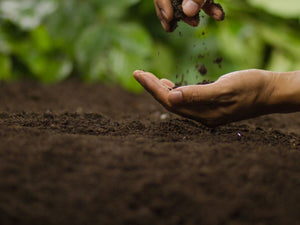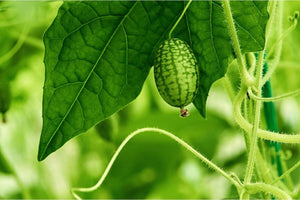No Need to Tame This WildFlower! How to Grow Wild Blue Iris from Seed
IrisHave you heard about Wild Blue Iris? This hardy perennial is a North American native. You can plant Wild Blue Iris seeds in the fall and enjoy the showy blooms for years to come. We’ll give you all the tips you need to start growing Wild Blue Iris in your garden.

What is Wild Blue Iris?
There are many kinds of irises, and most hybrid irises come from Asia and Europe. However, according to the U.S. Forest Service, out of around 280 species of irises worldwide, 28 are native to the United States. Wild blue iris (Iris missouriensis) is the most common native Iris in Western North America and grows naturally in forest meadows and wetlands.
Wild Blue Iris is also called Western Blue Flag Iris, and this cold hardy flower can be grown in zones 1- 10. Blue Flag Iris can be started from seed and then will continue to spread through rhizomes that can be divided to produce more iris plants.
There are several native Blue Flag Irises. They are all similar in color, from pale blue to deep blue-violet. You will find Iris setosa in Alaska, Iris missouriensis throughout the western states, Iris versicolor and Iris virginica throughout the eastern states, and Iris tridentata in the southeastern states.
Although Wild Blue Iris can take a year or two before it starts blooming, it will continue growing and blooming for years to come. It grows 1 to 2 feet tall and blooms in May or June, depending on the weather. It is also deer and rabbit-resistant.
How to Grow Wild Blue Iris from Seed
An easy way to start growing Wild Blue Iris in your garden is to start it from seed. Iris seeds can be started indoors or planted directly outdoors. These seed-starting tips will help you get your iris plants off to a successful start.
Wild Blue Iris Seed Germination Tips
Two essential requirements to get wild blue iris seeds to germinate are cold stratification and light. With attention to these requirements, you can successfully grow irises from seed.
To start growing blue iris indoors, you will need to first cold-stratify the seeds.
For indoor cold stratification, place the iris seeds on a moist paper towel and put them into a plastic bag. Place the bag in the refrigerator for at least 4 weeks to break the seed dormancy.
After the iris seeds have been cold stratified, they need light to germinate. Press the seeds into moist soil and lightly cover. Keep the soil moist until seeds germinate in 28 to 35 days.
When growing iris seeds indoors, use a humidity dome to keep the soil moist. A grow light should be placed a few inches above the seeds.
Keep the soil temperature between 70-75ºF.
Wild Blue Iris seeds can also be sown directly outdoors in the late fall. Before planting, soak the seeds overnight and lightly scarify the seeds. Only lightly cover the seeds, as they will need light to germinate after they have gone through a cold winter.

Transplanting Wild Blue Iris
Iris plants started indoors will need to be transplanted outdoors once they have several true leaves. They can be 3 to 6 inches tall or even taller. Ensure that all danger of frost has passed before transplanting. You can wait until several weeks after your last frost date. Space iris plants 12 inches apart to give them room to spread.

Growing Wild Blue Iris Flowers
When growing Wild Blue Iris plants, you will need patience. For the first year, they will look like grass shoots, so clearly label where they are planted so you don’t accidentally pull them up. Once they have a healthy root system, they will start producing flowers. The blue iris plant will grow one to two feet tall, and flowers will bloom in May or June. Wild blue iris is considered hardy in zones 3-8 and is deer and rabbit resistant.
Sun
Wild Blue Iris can be grown in full sun to partial shade. In areas with intense summer heat, the plants will appreciate some afternoon shade.
Soil
The natural habitat of wild iris is woodland meadows and along stream beds. These plants don’t need overly fertile soil, but they do appreciate soil that can stay moist.
Watering
Keep young iris plants moist. As their root system grows, they become more drought tolerant. However, they always appreciate moist soil in the spring and fall.
Fertilizer
As with most native wildflowers, wild blue iris doesn’t need additional fertilizer.
Overwintering Wild Blue Iris
Wild blue iris is winter hardy and shouldn’t need any special winter care.
Propagating Wild Blue Iris
Once you have strong iris plants, they will start spreading through rhizomes. To keep the plants vigorous, you can divide them every few years. Cut the rhizomes and leave them in large enough pieces so they have sufficient energy to produce more flowers.

Wild Blue Iris FAQs
How big do wild blue iris get?
Wild Blue Iris will grow one to two feet high. The roots will spread underground and produce more flower stalks.
Do wild blue irises like sun or shade?
Wild irises will grow in full sun to partial shade. They like some dappled shade to protect them from intense heat.
Is blue iris invasive?
Wild Blue Iris is not considered invasive. It slowly spreads through rhizomes and can be divided for new plantings.
Is wild iris a perennial?
Is wild blue iris poisonous?
All irises have some level of toxicity and shouldn’t be eaten. This toxicity is what helps protect them from being eaten by rabbits and deer.
“Iris rhizomes and rootstocks contain a purgative irritant, called irisin, iridin, or irisine, that causes gastroenteritis if ingested in large amounts.” Souce: https://cornellbotanicgardens.org/plant/wild-iris/
Wild Blue Iris is a beautiful native perennial. It takes some care to start growing from seed, but it is hardy and will grow independently once it is established. It is definitely one to add to your perennial wildflower garden.
Start growing Wild Blue Iris (Iris missouriensis) with these heirloom seeds from Sow Right Seeds.






Leave a comment